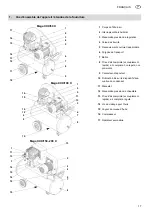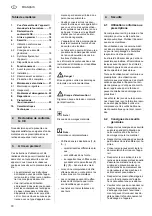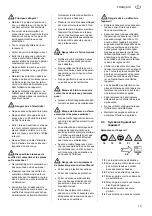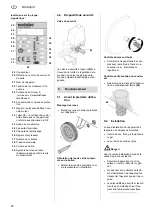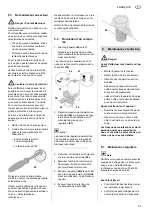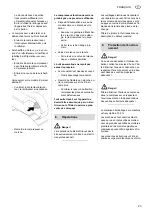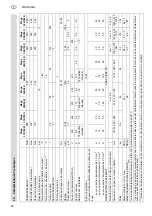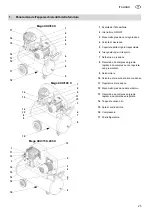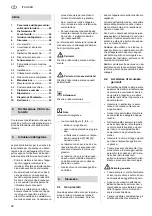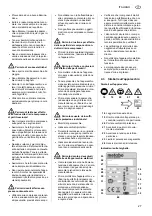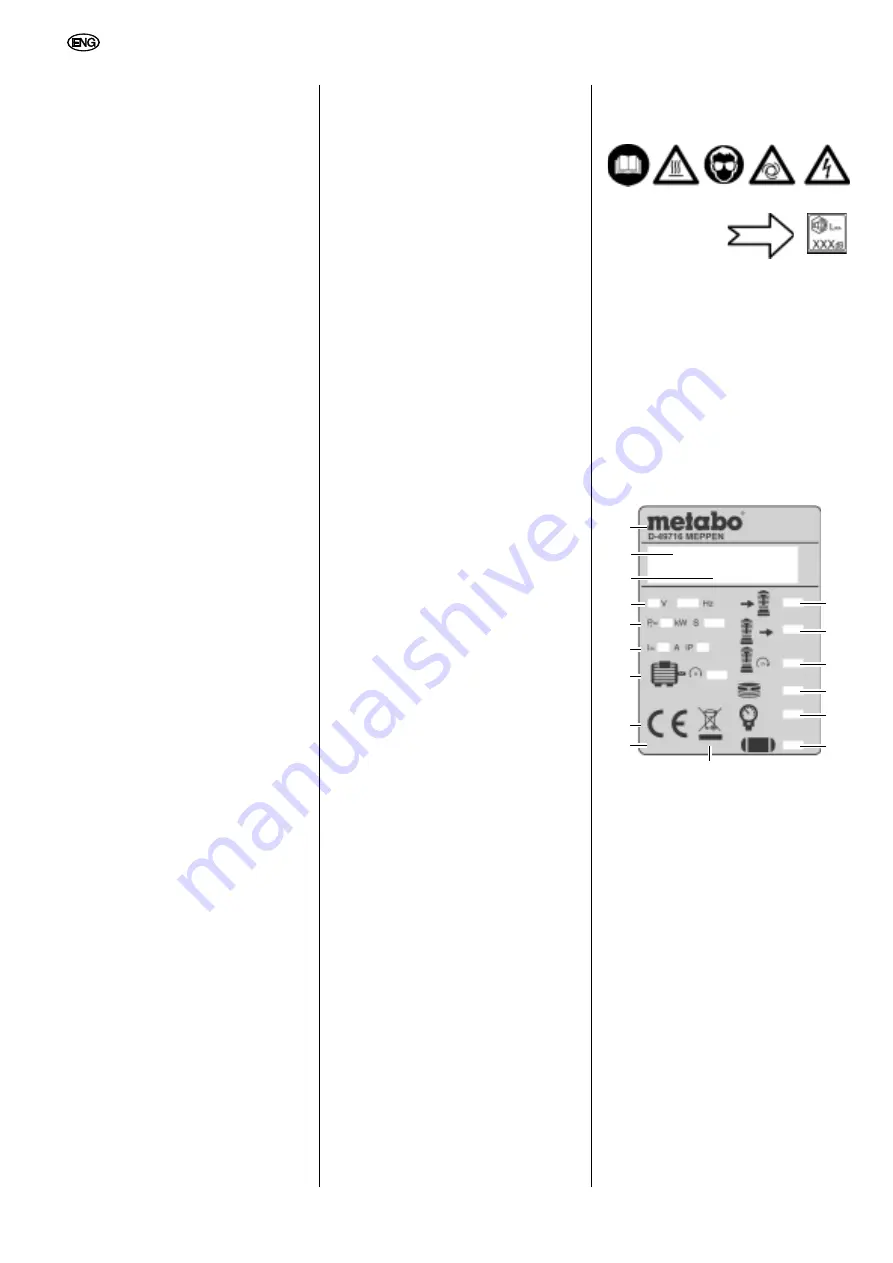
ENGLISH
12
Do not overload the electric tool –
use it only within the performance
range it was designed for (see
'Technical Data').
B
Danger! Risk of electric
shock!
Do not expose the electric tool to
rain.
Do not operate the electric tool in a
damp or wet environment.
Prevent body contact with earthed
objects such as radiators, pipes,
cooking stoves or refrigerators
when operating this electric tool.
Do not use the power cable for pur-
poses it is not intended for.
A
Risk of personal injury by es-
caping compressed air and parts
hurled about by escaping air!
Never direct compressed air against
persons or animals!
Ensure all air tools and accessories
used are designed for the working
pressure or are supplied via a pres-
sure regulator.
Please note that when the quick
coupler is disconnected the com-
pressed air contained in the pres-
sure hose will escape all of a sud-
den. You should therefore firmly
hold the air hose when disconnect-
ing it.
Ensure all screwed connections are
fully tightened at all times.
Do not attempt to repair the device
yourself! Only trained specialists are
permitted to service or repair com-
pressors, pressure vessels and air
tools.
A
Hazard generated by lubricat-
ed compressed air!
Use oil-saturated compressed air
only for air tools requiring such sup-
ply.
Do not use an air hose used to sup-
ply compressed air containing oil to
supply air tools not designed for op-
eration on compressed air contain-
ing oil.
Do not fill tires with compressed air
containing oil.
A
Risk of burns from the surfac-
es of parts carrying compressed air!
Let tool cool off before servicing.
A
Risk of personal injury and
crushing by moving parts!
Do not operate the compressor
without installed guards.
Please note that the compressor will
start automatically when the pres-
sure falls off to minimum! – Discon-
nect from power supply prior to any
servicing.
When turning ON the machine (e.g.
after servicing) ensure that no tools
or loose parts are left on or in the
machine.
A
Hazard generated by insuffi-
cient personal protective equipment!
Wear hearing protection.
Wear safety glasses.
Wear mask respirator when work
generates dust or mist detrimental
to health.
Wear suitable work clothes. When
working outdoors wearing of non-
slip shoes is recommended.
B
Hazard generated by electric
tool defects!
Keep electric tool and accessories
in good repair. Observe the mainte-
nance instructions.
Prior to use check the electric tool
for possible damage: before using
the electric tool carefully check
safety devices, protection devices
and any slightly damaged parts for
proper function as specified. Dam-
aged machines must be properly re-
paired before use.
Check to see that all moving parts
work properly and do not jam. All
parts must be correctly installed and
meet all conditions necessary for
the proper operation of the electric
tool.
Damaged protection devices or
parts must be repaired or replaced
by an authorised repair centre.
Have damaged switches replaced
by a customer service centre.
Do not operate electric tool if the
switch cannot be turned ON or OFF.
Keep handles dry and free of oil and
grease.
4.3
Symbols on the machine
Symbols on the machine
Information on nameplate:
Read instructions.
Warning that personal injury may
occur through touching of hot
parts.
Wear safety glasses.
Warning of automatic startup.
Warning of high voltage.
Guaranteed sound power level.
Observe direction of rotation.
Manufacturer
Article number, version number,
serial number
Machine designation
Supply voltage / frequency
Motor output P
1
(see also 'Technical data')
Power consumption / Protection
rating
Motor speed / nominal output
power
CE mark – This machine con-
forms to the EC Directives as per
Declaration of Conformity
Date of manufacture
Suction capacity
Filling rate
Speed (compressor pump)
No. of cylinders
18
19
20
21
22
23
24
27
28
29
30
32
35
36
37
38
31
34
39
40
33
25
26

















